
Image from our new Canon Digital Rebel XT camera taken at the Desert Botanical Garden in Phoenix, Arizona. More info to follow…
Dreams, Moments, Travels

Image from our new Canon Digital Rebel XT camera taken at the Desert Botanical Garden in Phoenix, Arizona. More info to follow…

Sonal, a friend and owner of Indo Euro Foods, and I visited Little India yesterday. We left at 6:30 a.m. for the 370-mile drive west to Artesia, California, where the ethnic shopping area of Little India is situated. While Arizona is expecting rain, we drive away from the sun rising behind a light cloud cover. The overcast sky does not let up and we enter California a couple of hours after our departure. Like Arizona, California is awash in wildflowers. Purples, yellows, reds, whites, and oranges stretch toward the horizon.

The eastern desert of Southern California has blossomed thousands of poppies, the state flower. My intention to stop on the freeway to grab a photo is sidelined since I wait and wait for the perfect photo until there are no more poppies on the side of the road. We are now fast approaching Los Angeles, and I am afraid we will soon be on the outskirts of the metropolis, where I will no longer find wildflowers. I take the opportunity to photograph a yellow hillside with snowy mountain peaks off in the far distance.
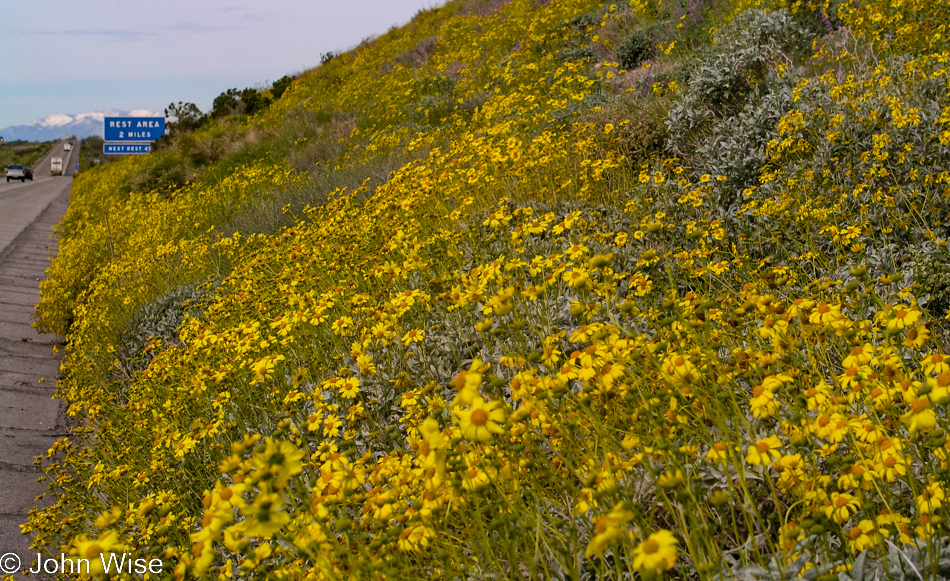
Typically, the 10 freeway into Los Angeles is a well-worn, somewhat barren brown strip of land with an occasional prison or rising mountain well away from the highway, but on this day, unlike no other I have seen out here, this road is a striking visual symphony of color. After nearly 6 hours of driving, we arrived in Artesia. Little India is found off the 91 freeway by exiting the Pioneer Blvd off-ramp and turning south.
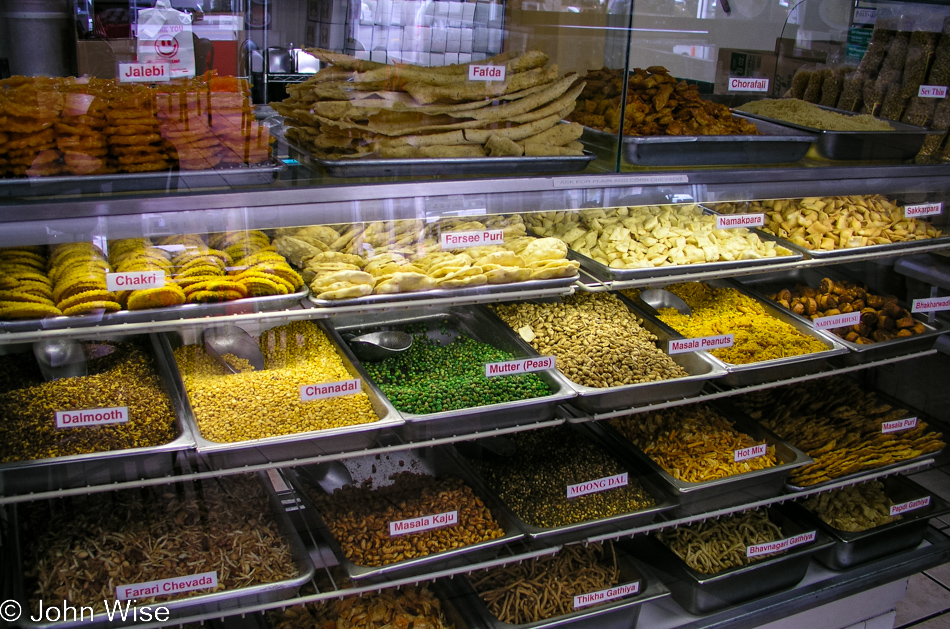
Before getting on to serious business, we find ourselves hungry and looking forward to some of the best Indian food short of home cooking. Our first stop is RasRaj, a fast-food Indian restaurant serving awesome Gujarati dishes as well as mouth-watering Indo-Chinese dishes. Everything here is vegetarian. Looking at the snacks counter, it is hard to take ordering from the menu seriously.
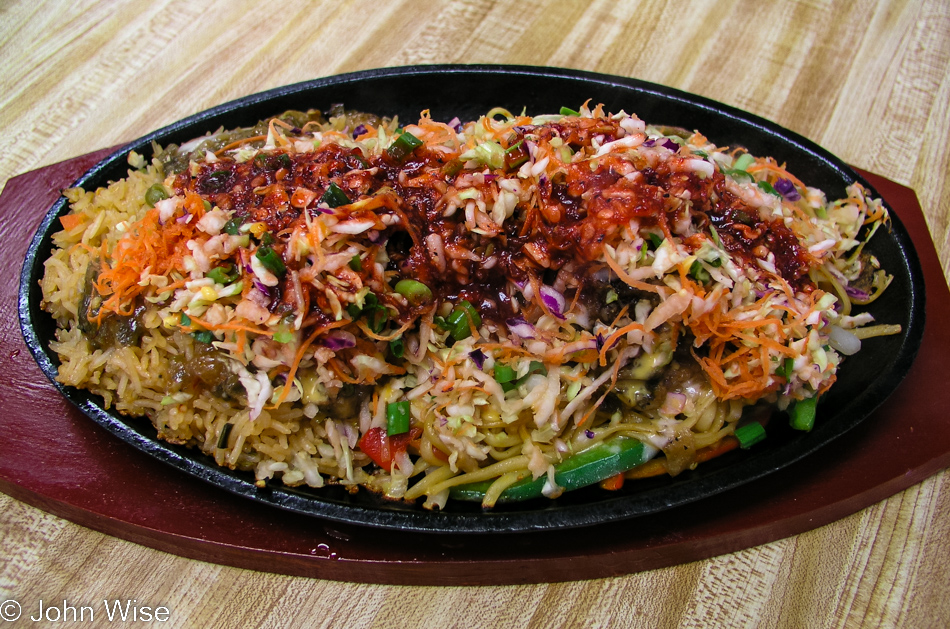
Well, choosing is not so hard. Of course, I will have to choose between a Thali (a variety of typical Gujarati dishes), a Somosa Chaat, or Bhel Puri, or do I go for the Manchurian Sizzler? I go for the latter, a lava-hot plate of splattering veggies, rice, and noodles. Initially, Sonal and I wanted to split an appetizer, which is actually a meal in itself – the stuffed chili. RasRaj wouldn’t have them until Saturday. Thank God, as this saved us from ourselves. After finishing our lunch, we are both too stuffed to eat a peanut.

Now it is time to get busy as our day is short in Little India. The next stop is Ziba Music & Gift Center at 11808 186th Street selling Indian music from Bhangra and Lounge to Bollywood soundtracks and devotional recordings. Ziba also carries the newest DVD releases coming out of India, along with all the classics. Additionally, on offer are a few book titles chronicling favorite actors such as Shahrukh Khan and Amitabh Bachchan. If you need musical instruments from India, this would be a good stop. Sonal is here to pick up music and movies to bring to her shop in Phoenix and also some items that have been specially ordered by customers.
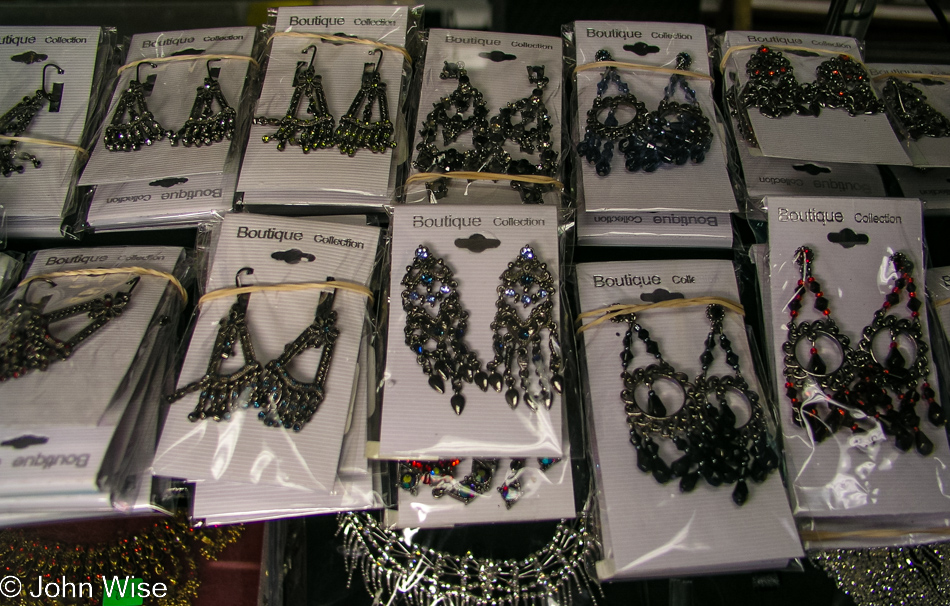
While Sonal browses the shelves, I walk around the corner to Bangle Bazaar to find a gift for Caroline. My wife can never have enough jewelry and has taken a liking to the costume jewelry worn by Indians so I pick up a couple of earrings to appease her for not being able to come along today. Afterward, we have to leave Pioneer Blvd for a short drive to the distributor of Haldiram products. Haldiram makes sweets and snacks.
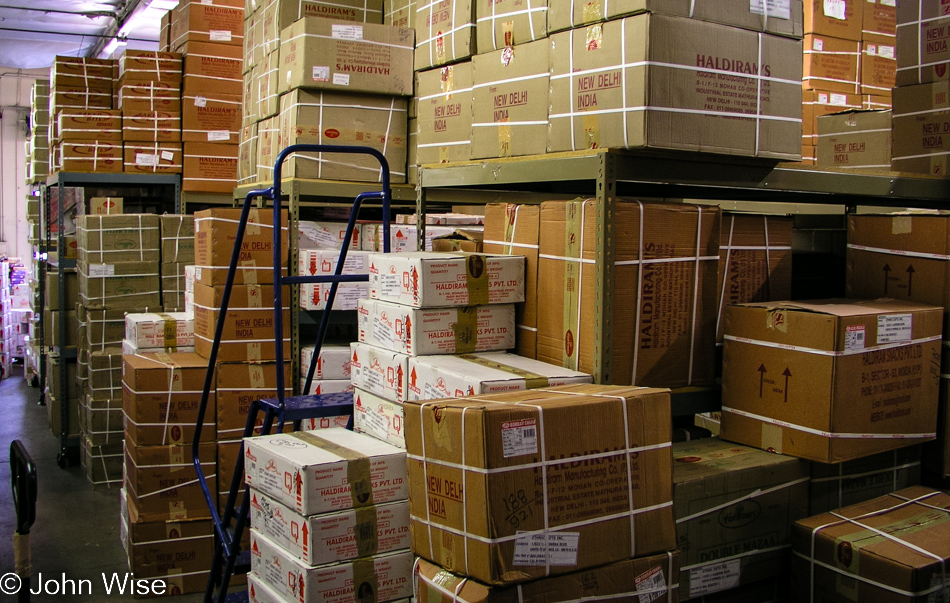
Sonal orders 20 different products, which end up coming in some rather large boxes. We begin to wonder if they will all fit in the van. They do, but it is apparent that we will be curtailing the shopping for lack of space. The next stop is scratched off the list, and the products we were to pick up will have to be shipped to Phoenix at a later date.
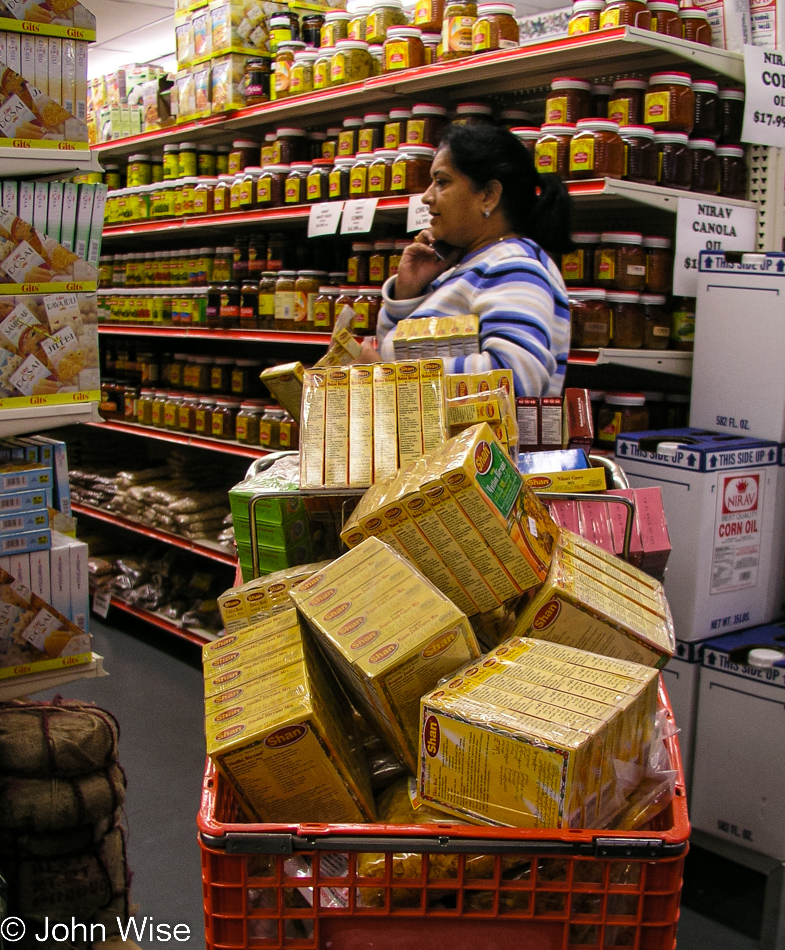
We have a product return that needs to be delivered to Ajay from Nirav, another Indian food distributor. Ajay also has a grocery store on Pioneer Blvd, the Little India Market, which is where we will drop the return. At Ajay’s, Sonal grabs a cart and quickly forgets that her van is nearing capacity. Piling stuff into the cart for her store, she throws in 12 of this and 6 of that, followed by handfuls of whatever falls into her hands – Sonal is a pro shopper. I try to put on the restraints and continuously remind her that we have so very little room left but to no avail – Sonal is gonna get what she needs for the store, and there ain’t no stoppin’ her.

Following this frenzy, we are scheduled to meet with Shana, who has the distributorship in Southern California for the Nanak brand of Paneer cheese. She is bringing 10 cases of cheese, 5 cases of Ghee, 3 cases of Paneer Poppers, and a couple of other things that promise to lower Sonal’s van to within a couple of inches of the ground. The boxes are somehow made to fit between, up, over, on top of, and next to the other 1124 pounds of food; we will be driving back to Phoenix today. Through Shana we learn of one more stop we have to make before getting back on the freeway heading east. She knows someone who specializes in South Indian products. Following her out of the parking lot, Sonal’s van scrapes the bottom; it is literally just an inch or two off the ground.

The guy we visit sells us some Telugu and Tamil DVDs and now Sonal has a contact to make her South Indian customers in Phoenix a little happier. The van couldn’t carry even a feather’s worth of volume more. From the roof to the floor, window to window, empty corners, and the floor between our seats, everywhere in the van is a package, box, or container. On the freeway, at 6:00 p.m., we get stuck in a bumper-to-bumper crawling parking lot. It will be 2 hours before we move 35 miles and are finally on our way at a reasonable speed. It takes until shortly before 2:00 in the morning before we reach Sonal’s house and put away what needs to go in the freezer; then, I speed home and fall into bed.
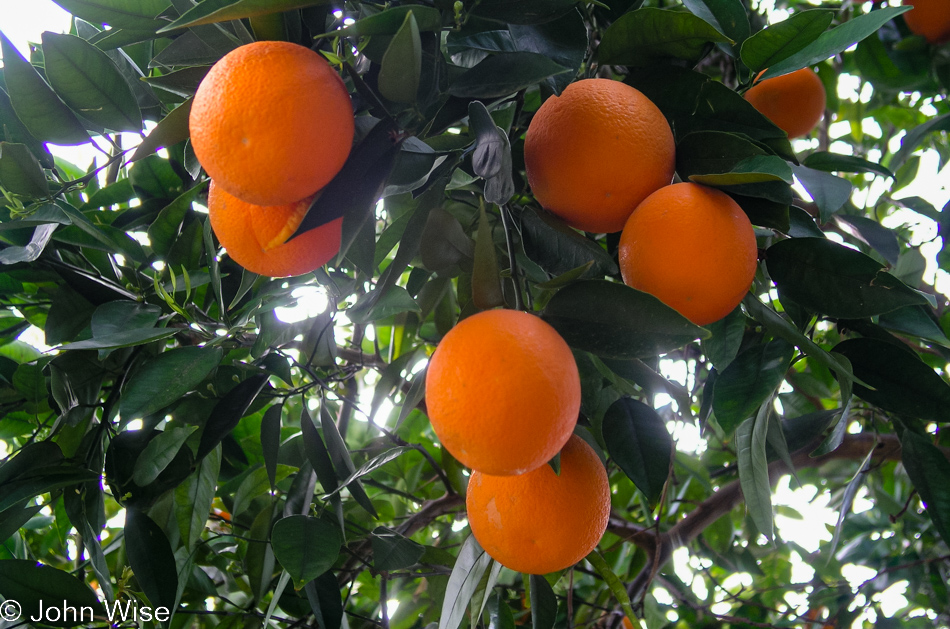
One of the joys of winter in Arizona – FRESH ORANGES. Picked 40 pounds worth at my mother’s house this afternoon.
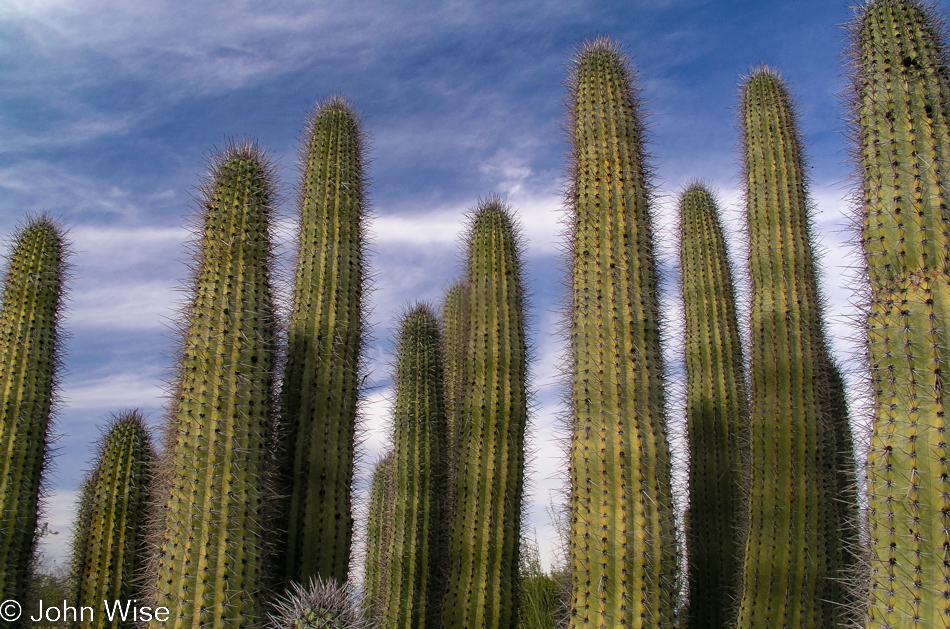
These days, over winter into early spring, are the best to visit the Desert Botanical Garden in Phoenix, Arizona. The temperatures are nice, the clouds supply nice contrast and depth, and the plants are deep green. The first wildflowers are peaking out, but not like what we will see in the next two months.
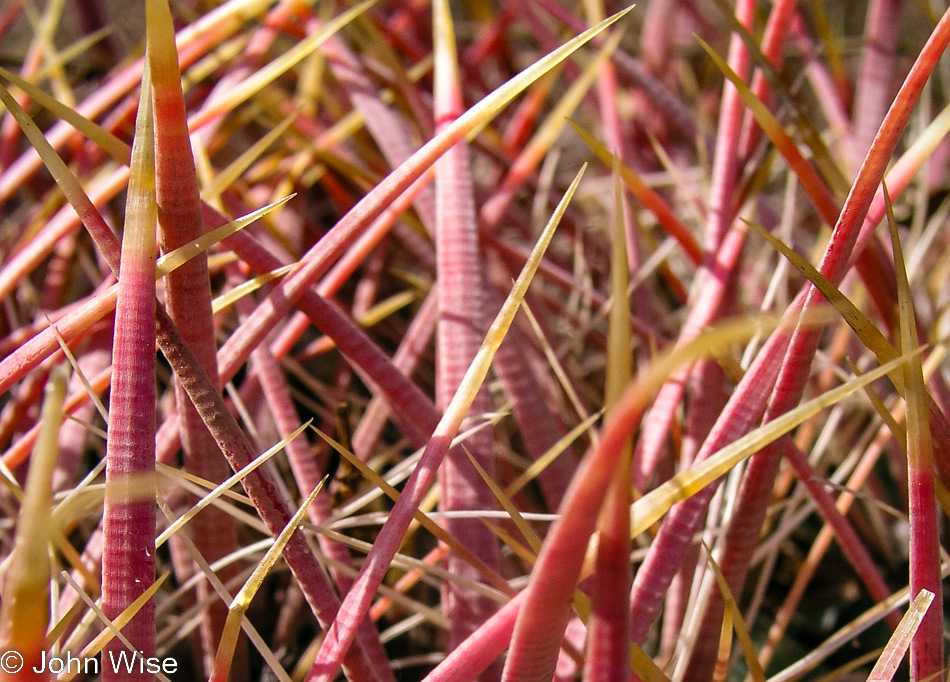
Update: These thorns and photos below were added in November 2022 while I was updating some of my oldest posts, ensuring that my copyright was on the images and that the colors were properly adjusted. In some instances, I update the text as I go along. Regarding this particular post, only the top photo and the three sentences were in the original post due to bandwidth limitations. As those restrictions are no longer relevant, I’m taking the opportunity to add the ones that would have been posted back then had circumstances allowed it.
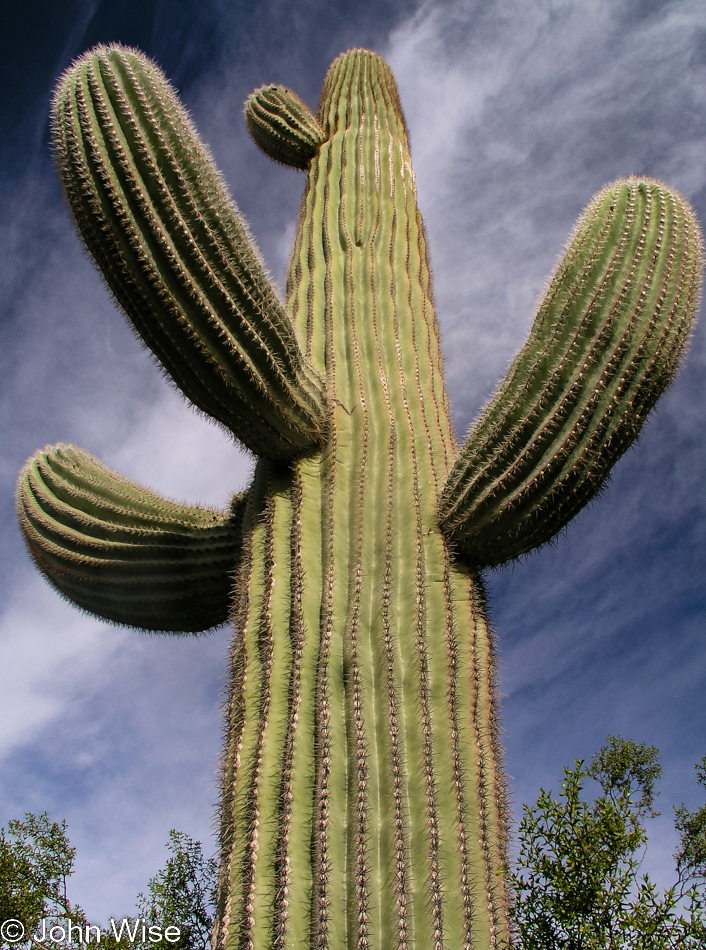
The mighty saguaro is a protected cactus here in Arizona, and its blossoms are the state flower.
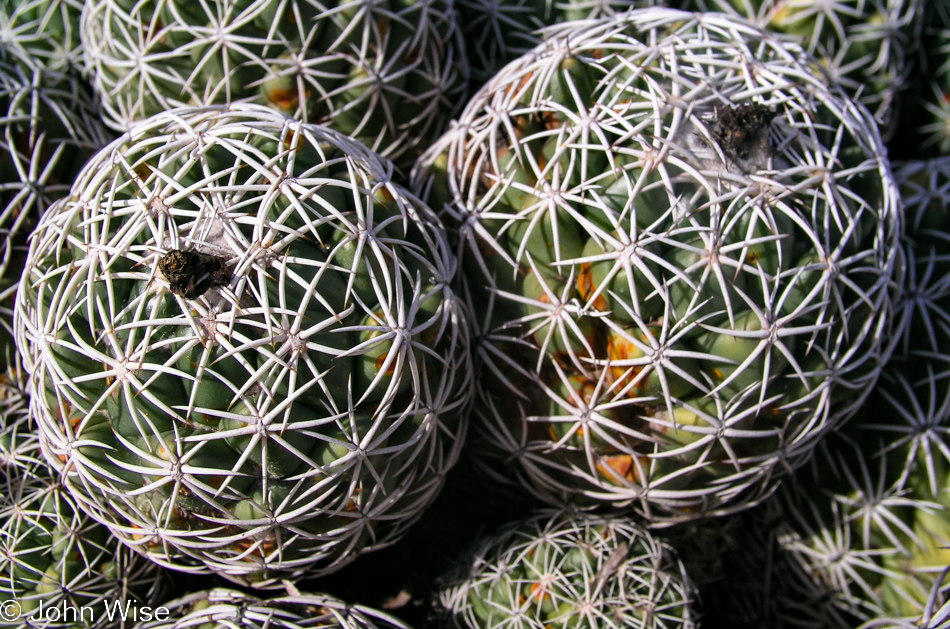
I can only wonder what kind of symbiotic relationship this cactus has in the desert; it’s obviously not food, although those javelinas do enjoy eating prickly pear cacti.
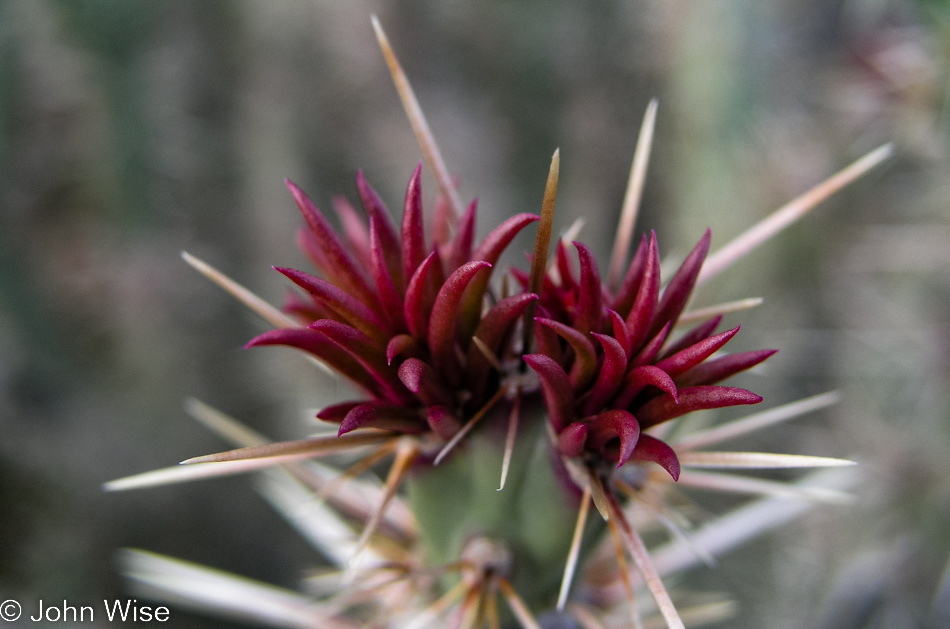
The diversity of flowers on cacti is astonishing.
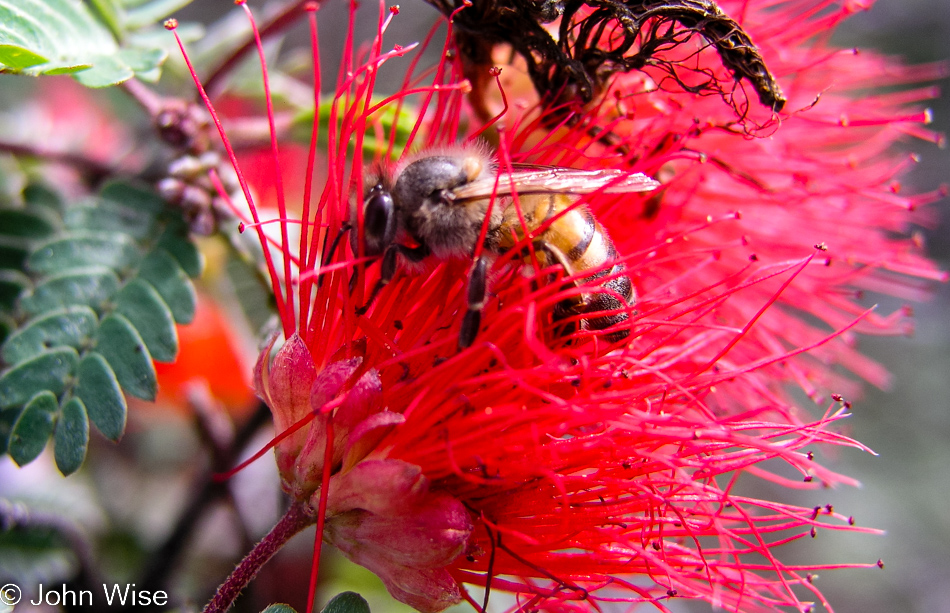
Sure, I like the flower but the bee is beautiful.
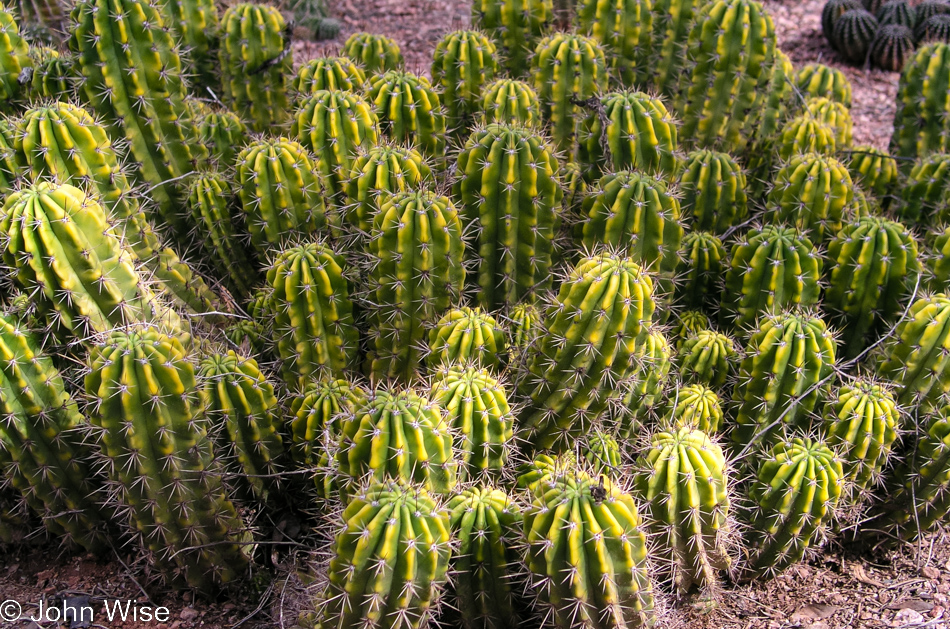
All shapes and sizes with colors that draw from a wide palette. If you don’t appreciate cacti, I’d have to wonder how much of the delight of living in Arizona is lost on that person.
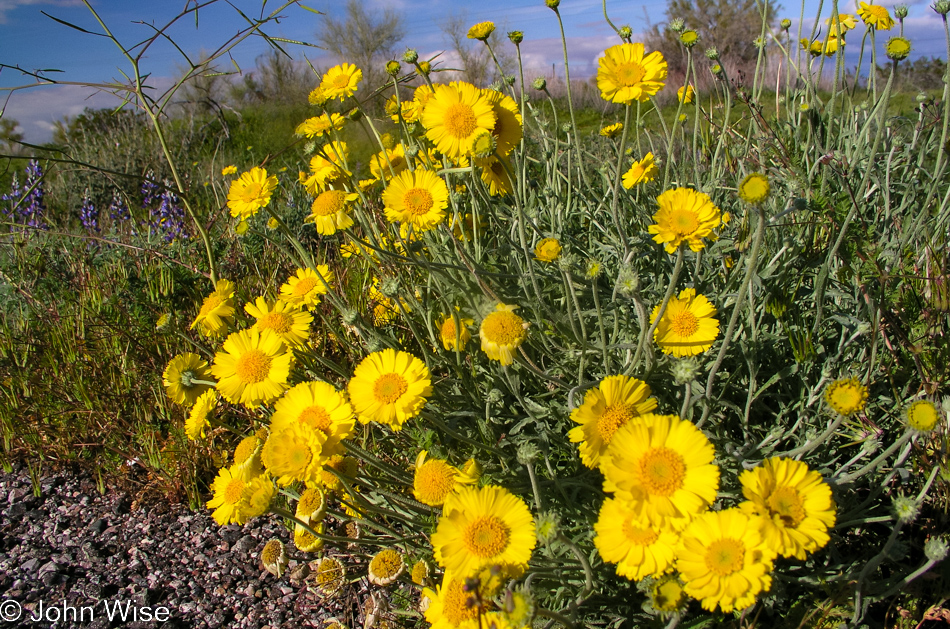
There’s been a glitch in the matrix, as the text accompanying this blog entry is not the original. What happened to what was written back on this day in 2005 is lost in time nor does Archive.org have a copy. Somewhere else on the blog, I believe I explained that I lost all of my posts and had to go to various cache sources to rebuild the posts, I wasn’t successful in recapturing them all.
Update: The photos below were added in November 2022 while I was updating some of my oldest posts, ensuring that my copyright was on the images and that the colors were properly adjusted. In some instances, I update the text as I go along. Regarding this particular post, only the top photo and the three sentences were in the original post due to bandwidth limitations. As those restrictions are no longer relevant, I’m taking the opportunity to add the ones that would have been posted back then had circumstances allowed it.
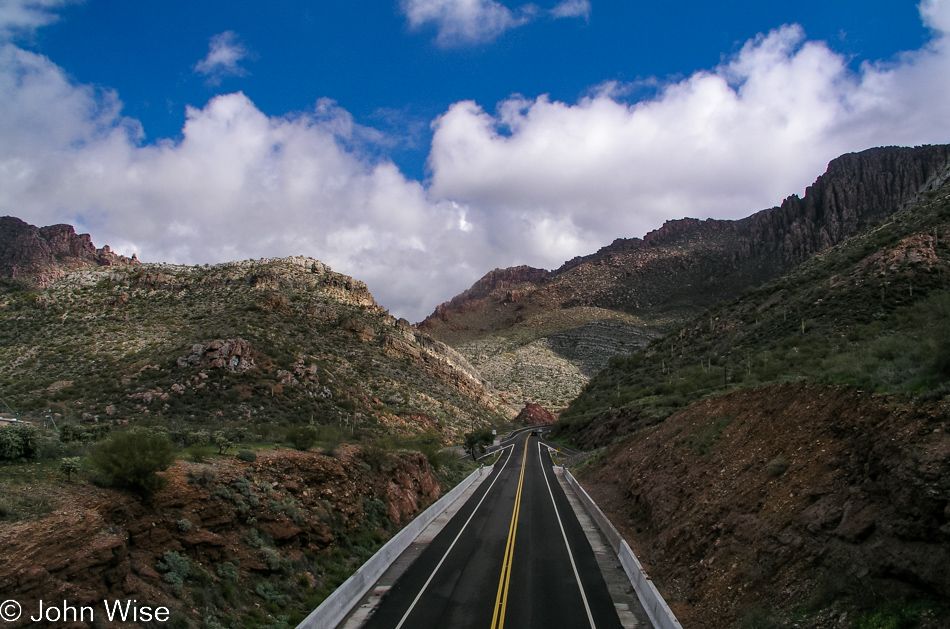
In the original post, only the flowers were posted, and those were photographed south of Florence on Highway 79 on our drive back to Phoenix. This shot was taken from a bridge over Highway 60 that continues on to Globe further east, but we are traveling south out of Superior on Highway 177.
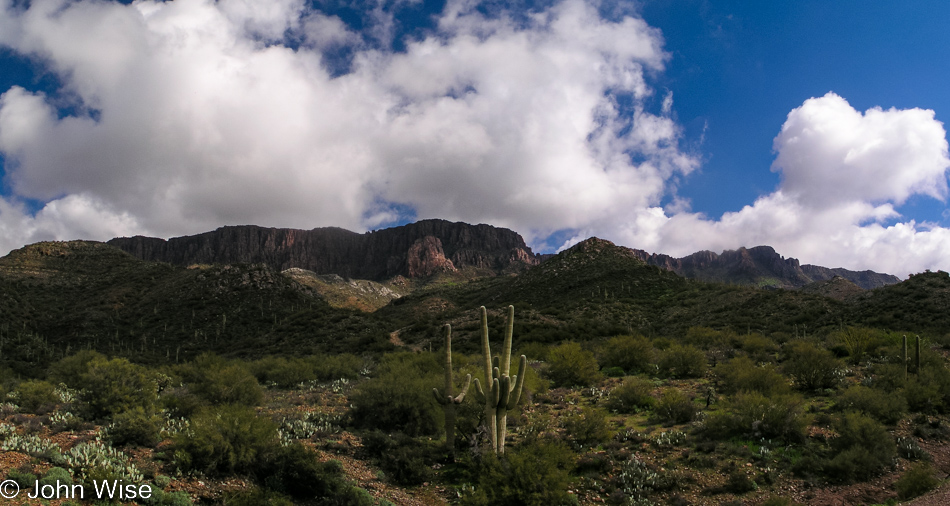
Just out of town with Superior on our left.

From here, things get fuzzy, although that looks like part of the Ray Mine.
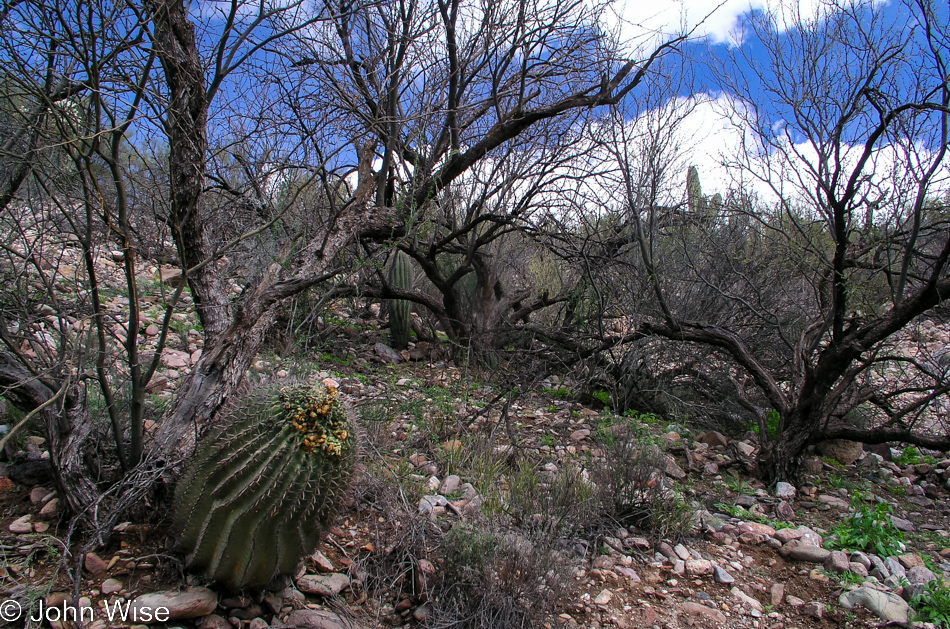
While I’m mostly looking for those beautiful aesthetic shots of the desert, there’s something to be said about the gnarled thickets of desert that also exist.
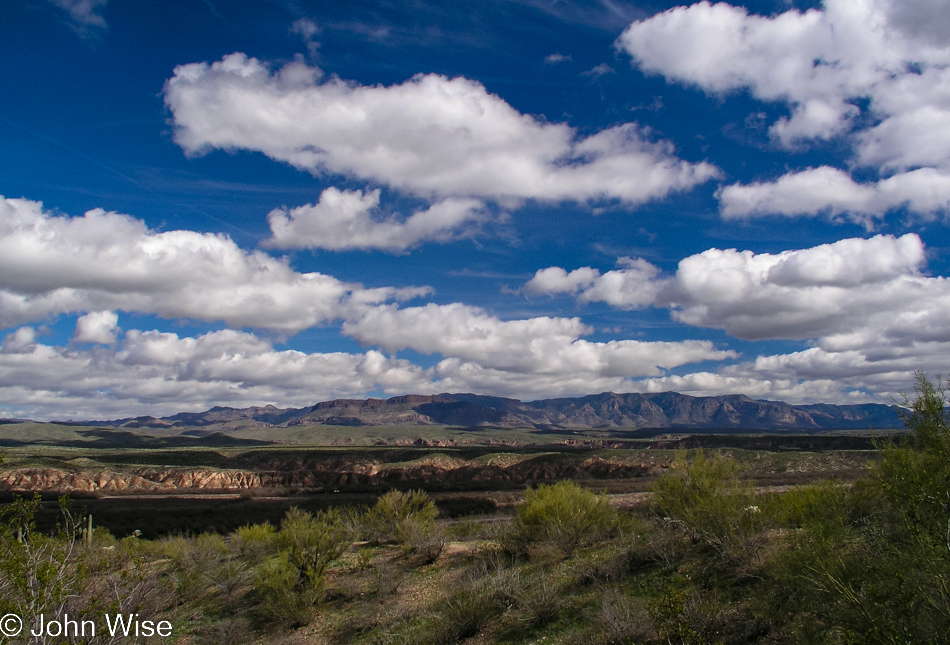
Considering our next location, this must be looking east from Mammoth, Arizona.

This was the San Manuel-Kalamazoo Mine in San Manuel, Arizona; within two years of me taking this panorama (don’t look too closely at the smoke stack seams; the stitching is less than great), the entire sight was wiped clean, and the land started being remediated. Back in its day, it was an underground mining operation, primarily mining copper.

Our snail neck pillow is always happy to offer us comforting support for a quick nap.
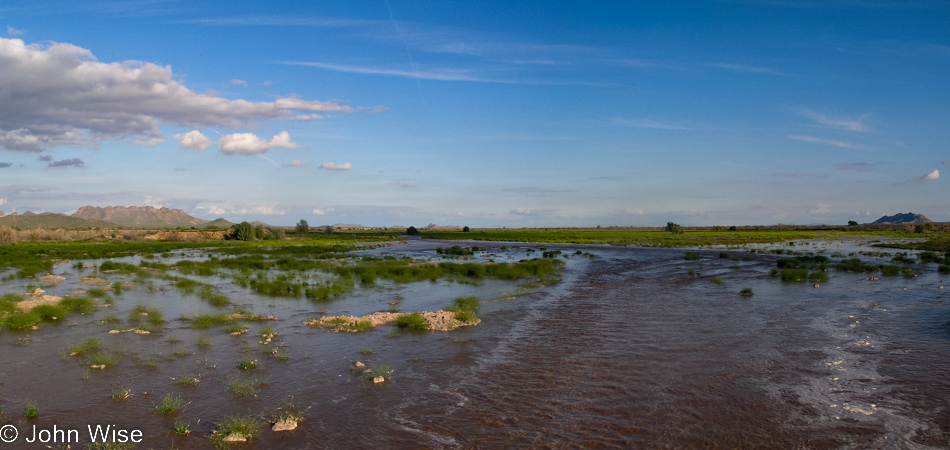
More signs of the recent heavy rains.
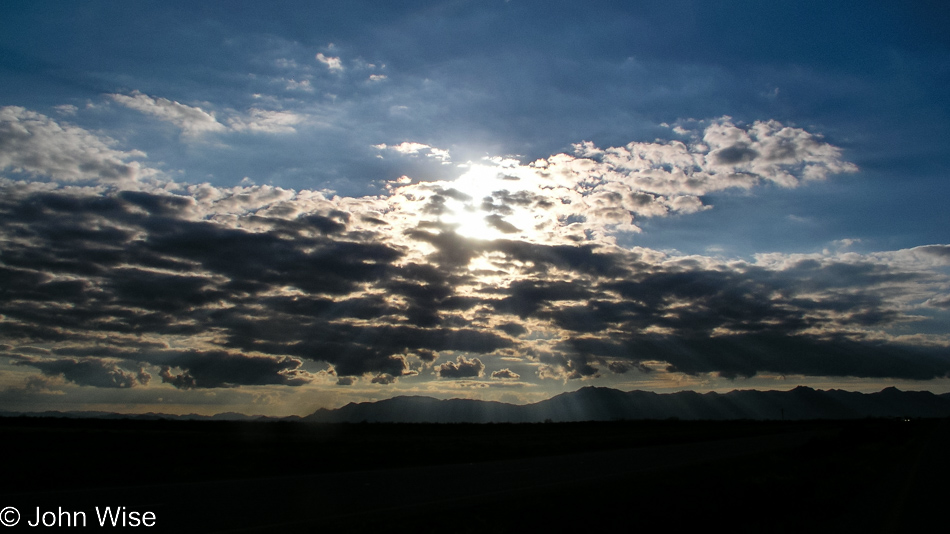
Almost home after an all-day out-and-back road trip.
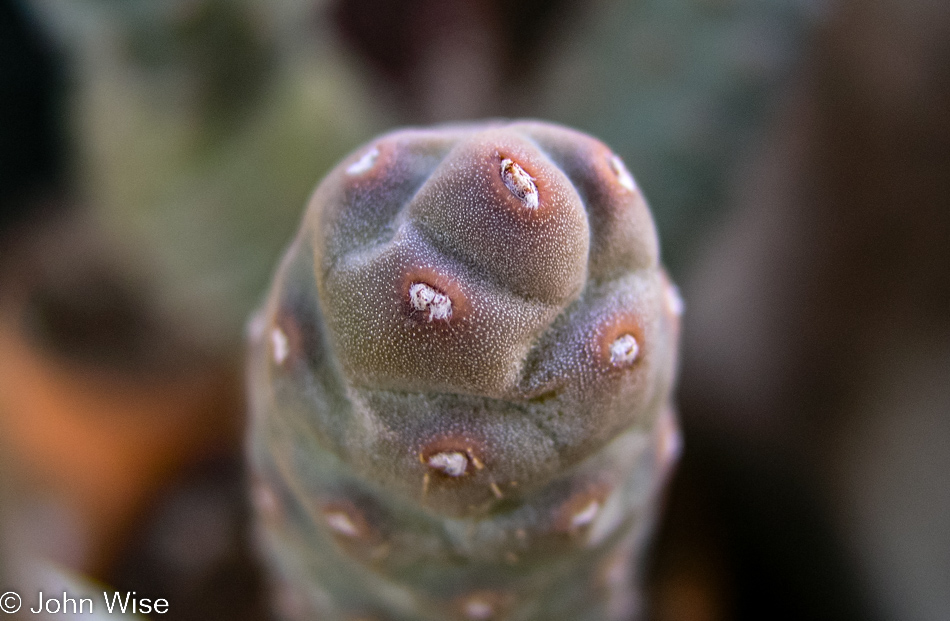
Cactus on our front balcony.